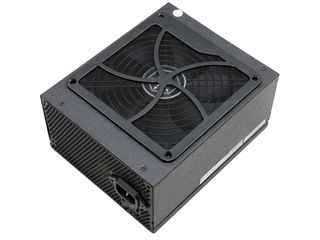SilverStone Strider Platinum ST1200-PT PSU Review
The highest-end member of SilverStone's Strider Platinum line is the ST1200-PT, and we're ready to give it an exhaustive evaluation. It achieves a high power density score thanks to compact dimensions, and there's that 1200W capacity. But is this enough?
Why you can trust Tom's Hardware
Pros, Cons, And Final Verdict
The ST1200-PT uses the same Enhance Electronics platform as Gigabyte's XP1200M, which we reviewed a while ago. In this unit, though, we noticed a large ripple performance degradation on the minor rails, especially at 3.3V, under high ambient temperatures. We might have a lemon on our hands, so we're asking SilverStone for another sample to rerun our ripple measurements under the same conditions. If it performs better, we will update our charts. If not, we'll have to take a closer look.

As you may have guessed, the ST1200-PT didn't impress us, and not only because of its ripple suppression problem. For starters, its hold-up time is lower than 17ms. And on top of that, it is affected by an inaccurate power-good signal. In this price category, we expect manufacturers to correctly tune this important point. When the power-good signal lasts longer than the actual hold-up time, other components in your PC are fed lower voltages than normal. This, along with high stress on VRM circuits, can lead to malfunctions in a worst-case scenario. Enhance should put a stop to this practice and tune power-good accordingly. The SilverStone ST1200-PT suffers from it, Gigabyte's XP1200M featuring the same platform has the same issue, and Cooler Master's high-end MasterWatt Maker 1200 is not immune either. We should note that the latter unit uses a Titanium-rated, Enhance Electronics platform.
Of course, there are positives to mention. We like the ST1200-PT's fully modular cabling, the high-quality fan, the semi-passive mode, the bundled magnetic fan filter, and those high-quality bulk caps. In addition, SilverStone uses pretty good caps on the unit's secondary side. The company's build quality is solid and the PSU's design is modern, though we'd like to see fewer power transfer cables at its internals. Enhance already knows how to get rid of them, since it uses a different design in some of its smaller platforms. That pile of power cables on the secondary side makes cooling the electrolytic (and polymer) caps harder than it needs to be. We also don't like that the fan's profile goes crazy at high ambient temperatures, pushing noise output as high as 55 dB(A) at full speed. The ST1200-PT might not be the most efficient Platinum-rated unit in this category, but it fares well enough to accommodate a more relaxed fan profile. Finally, we should mention the PSU's low inrush current, especially with 115V. High inrush currents put lots of stress to your home's electrical infrastructure, so it is always nice to see high-capacity PSUs with effective inrush current protection circuits.
MORE: Best Power Supplies
MORE: Power Supplies 101
MORE: How We Test Power Supplies
MORE: Picking The Right Power Supply: What You Should Know
MORE: Computer History: From The Antikythera Mechanism To The Modern Era
MORE: All Power Supply Content
Current page: Pros, Cons, And Final Verdict
Prev Page Performance, Performance Per Dollar, Noise, And Efficiency RatingsStay on the Cutting Edge
Join the experts who read Tom's Hardware for the inside track on enthusiast PC tech news — and have for over 25 years. We'll send breaking news and in-depth reviews of CPUs, GPUs, AI, maker hardware and more straight to your inbox.
Aris Mpitziopoulos is a Contributing Editor at Tom's Hardware US, covering PSUs.
-
powernod Wow!! Extremely impressed with Aris's more thorough "Advanced Transient Tests" !!Reply
Great to see a reviewer who never stops evolving his work!!
Amazing work Aris !!! -
Metteec Nice review, Aris. $233 is a lot to spend on a PSU. You can get a Corsair HX1200i for $210 after mail in rebate, which is a well-regarded PSU with a 7-year warranty.Reply -
jeffunit "...and as you can see, the glossy silver surface makes taking pictures difficult."Reply
It sure does, because the pictures have the exterior looking like matte black.
